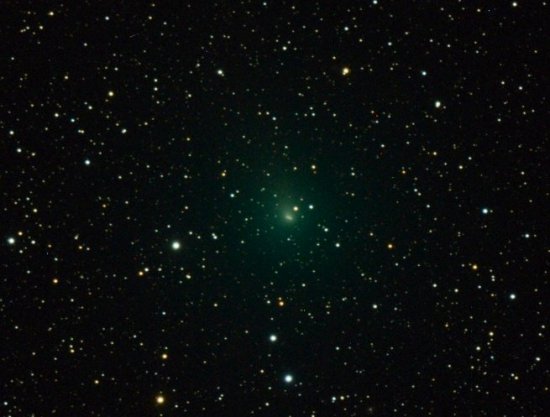The skies were clear over New Mexico last night — Oct. 6, 2010 — so Rhiannon Blaauw of NASA’s Meteoroid Environment Office, Marshall Space Flight Center, Huntsville, Ala., captured this image of Comet Hartley 2 at a distance of “only” about 14 million miles from Earth.

Hartley 2 has passed out of the constellation Cassiopeia and is now traveling through the constellation Perseus. On October 20th, the comet will come within 11 million miles of Earth. Since comets rarely come this close, it will be faintly visible to the naked eye in the early morning sky. The comet has an orbital period — or time to travel once around the sun — of approximately 6.5 years.
For those interested in astronomy photography, the image was taken with a single shot color filter with 300-second exposure via a remote-operated telescope located in Mayhill, N.M.
We’re tracking Hartley 2’s journey as it approaches Earth, so stay tuned for more photos!
Image courtesy of Rhiannon Blaauw, NASA’s Meteoroid Environment Office, Marshall Space Flight Center, Huntsville, Ala.

